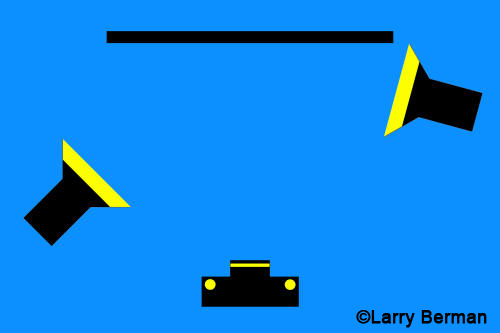All right, here is a follow-up to the St. Louis open jury workshop held Saturday...
...just as the Raven kicker's toe was about to touch the ball to begin the Superbowl. The phone rang. It was Larry Berman. We spent the next half hour discussing the ins and outs of Zapp and the previously mentioned workshop of which he was one of the mock jurors.
There are several things that I wanted to share with you. Approximately 100-125 people showed up for the event, according to the moderator, about 55 were on line. Now the online experience was lacking, the images weren't great, talk about a blind jury...however, the audio content was very rich.
I don't know about you but if I cared to look I would probably find that I spend upwards of $1K applying to shows (half of my annual income). Since Zapp arguably one of the most important games in town I am hoping that all serious art fair artists consider giving up a day to such an endeavor.
Kudos to Cindy at St. Louis, and to the underpaid participants like Larry who conducted the session.
My conversation w/Larry was very productive. There are so many nuances to going from C+ to a B to an A for professionals relying on Zapp, that I recommend trying a professional to help you remain competitive. Secondly, his passion for working in this arena is unmatched. There are many flaws to the system most of which will never be fixed, so it becomes essential for artists to recognize and appreciate exactly what they are dealing with.
As artists, this group is dedicated to sharing what we know. That sharing is a higher calling. Some of us are good at certain aspects of what we do, their experience and knowledge is particularly important. Thanks to everyone in this group, thanks to show directors who make these sessions possible and thanks to the individuals who take this shit seriously.
Oh, and as festival artists, we play the Superbowl every weekend so missing the big show paled in comparison with my conversation w/Larry!
Comments
Back to the mock jury in St. Louis: We went to this event last year and followed-up with another visit this time around. It is local for us so we were able to physically attend. Two different years with two different sets of jurors was very valuable. Compare and contrast sort of thing. I think all in all there was a consensus -- namely that one needs to put best foot forward. Professional images and professional booth display. We approach this as the business that it is. Competition is fierce. But that is OK. Makes for greater rewards. Many thanks to Cindy and her staff with the fair for putting this on. We are new to the art fair circuit -- 2years. Have learned a lot in a short time but are always looking for better ways of presentation, display, applying to shows, promotion, social media, etc. Cindy summed it by saying that no matter how good one's jury images come across to the jurors it is still a bit of a crap shoot. But let's face it, skimping on any part of the package will ultimately be self defeating. Sometimes I think making the art is the easy part. Again, it is a business and needs to approached as such. Professionalism in a challenging market.
Yeah, for sculpture many juried exhibits allow for detail shots, but still the same # of images total.. So all you need is one or two good images, a couple detail shots and a convincing booth shot. Since there seem to be so few traditional sculptors out there, (at least in my neck of the woods), they are almost invariable juried in - just like art or experimental furniture makers
There is no rule, except for Lakefront.
The problem is that it's more information for the jurors to take in within the short period of time they evaluate your images.
And the PIP (picture in a picture) works best if the larger image is the detail and the smaller the entire piece, or else you still can't see the detail.
Larry Berman
http://BermanGraphics.com
412-401-8100
At Krasl jury, I saw at least one painter who did exactly as Mark described earlier and took up the entire square jury image- a vertical picture of the whole painting to the far left of the allotted square and two detail shots, one on top of the other, to the right. Is this not allowed for 2D?
Two lights from the same (opposite side) position cancel each other out and there are no shadows. It needs to come from one side and the other just to balance the overall lighting.
Larry Berman
To Show texture, one light has to be closer to the edge of the piece and cast shadows. It's the shadows that show texture.

Larry Berman
http://BermanGraphics.com
412-401-8100
When you set your lights are you using 4 or 2? I have noticed that for texture to show, you have to get a really low angle 50 degrees or more i.e. 50 degrees towards the light being perpendicular to the view of the camera subject's straight on view
Mark, I shoot them before I frame them or else it would be almost impossible to photograph. I bracket the hack out of each one and will shoot at different settings.
-
1
-
2
-
3
-
4
of 4 Next